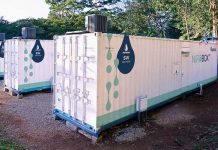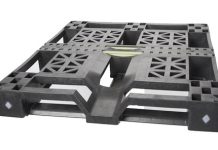by Debra Fiakas CFA
In a game of word association many investors might respond Veolia Environmental SA (VIE: P or VEOEY: OTC/PK) at the mention ‘water reclamation.’ General Electric (GE: NYSE) and Siemens (SIE: DE or SIEGY: OTC/PK) might be next choices. These three companies have been ‘go to’ sources for water treatment by municipalities and industry.
Indeed, it may take a behemoth to address water issues. In January 2015, the World Economic Forum declared water as the number one crisis impacting the world, recognizing the dire circumstances of water supplies. Over 660 million people – one in ten people – around the world do not have access to safe water for drinking, cooking and bathing. For some it is a matter of inadequate water supplies and for others economics prevent them from accessing quality water sources.
Some might be confused by this circumstance given the wide expanse of world waterways. Unfortunately, 97.5% of the planet’s water is saltwater and another 1.75% is trapped in ice. Only the remaining 0.75% is available for drinking water, coming from a mix of underground wells, rivers and lakes. The amount of water supplies will not change, but we are expected to see an increase in fresh water demand by as much as 40% by the year 2030 as developing countries seek to improve quality of life for its citizens and new industrial and commercial processes rely on water.
The inadequacy of good quality, affordable waters supplies renders precious every water droplet, shedding light on why water treatment is big business and not just business for a few big companies. The best water is called ‘potable water’, which historically has been provided through natural sources. Sometimes even Mother Nature falls short of goal, leaving impurities in drinking water supplies or nature is simply overwhelmed by man-made pollution and misuse. The need to treat water has given rise to a large market for separation, filtration and treatment solutions.
Pentair Plc. (PNR: NYSE) is a growing player in the water treatment industry. Unlike the big companies named in the opening paragraph of this article, Pentair is exclusively focused on water. With corporate headquarters in the United Kingdom, Pentair keeps its primary business office in the U.S. Among a mix of other water-related products, Pentair offers ultra-filtration and nano-filtration solutions to purify liquids. Its products are used by water system owners, industry and homeowners.
In the fiscal year ending December 31, 2015, Pentair reported $6.5 billion in total sales and a net loss of $65 million or $0.42 per share. Excluding a non-recurring charge of $554 million related to the write-off of intangible assets, operating income for continuing operations was $2.63 per share. Operations generated $739.3 million in cash flow in the year, leaving $126.3 million in the bank at the end of December 2015, after investments and pay-down of debt. Pentair has relatively leveraged with a debt-to-equity ratio of 117.49. Management seems to have no trouble in juggling cash and debt, devoting some operating cash flows to a regular dividend. Current yield is around 2.5%.
A true small-cap play on water treatment can be found in Calgon Carbon (CCC: NYSE), a supplier of a broad mix of filtration and purification solutions for fluid and gas streams. The company is probably best known for its activated carbon materials, which are widely used by water system owners to filter out contaminants. Calgon also offers ultraviolet irradiation and ion exchange technologies for waster systems. The company recently opened a new plant in the U.K. for the reactivation of spent carbon used in drinking water applications. Capacity at the plant has been increased to 10,000 tons per year from 5,800, providing some insight into the promise Calgon sees in the water market for its carbon products.
Calgon also offers a dividend, but its yield of 1.4% is not as appealing as that of Pentair. However, Calgon shares are trading at an interesting 12.9 times forward earnings, making it a relative bargain given the projected earnings growth of 19% in 2016.
Calgon reported $535 million in total sales for its water quality solutions, providing $43.5 million in net income. That represents a net income margin of 8.1%. The conversation of sales to operating cash was an even more impressive 13.1%. The company is a consistent generator operating cash flow, which is probably why the company has a relatively low leverage position. The debt-to-equity ratio is 28.3 for Calgon compared to a 90.6 ratio for the greater pollution control and treatment industry.
Debra Fiakas is the Managing Director of Crystal Equity Research, an alternative research resource on small capitalization companies in selected industries.
Neither the author of the Small Cap Strategist web log, Crystal Equity Research nor its affiliates have a beneficial interest in the companies mentioned herein.








